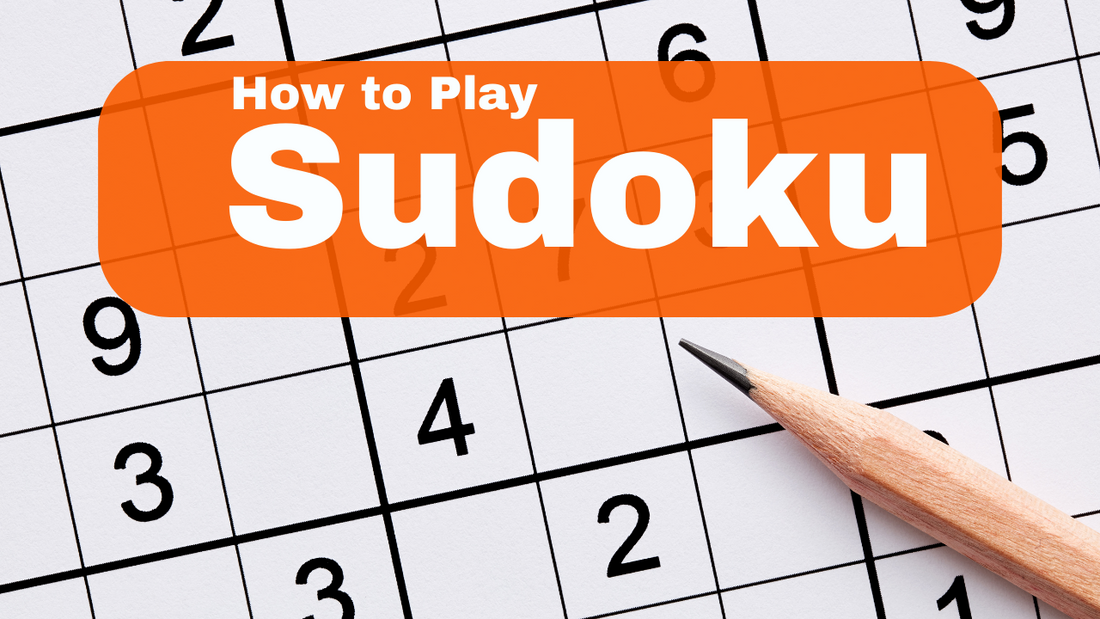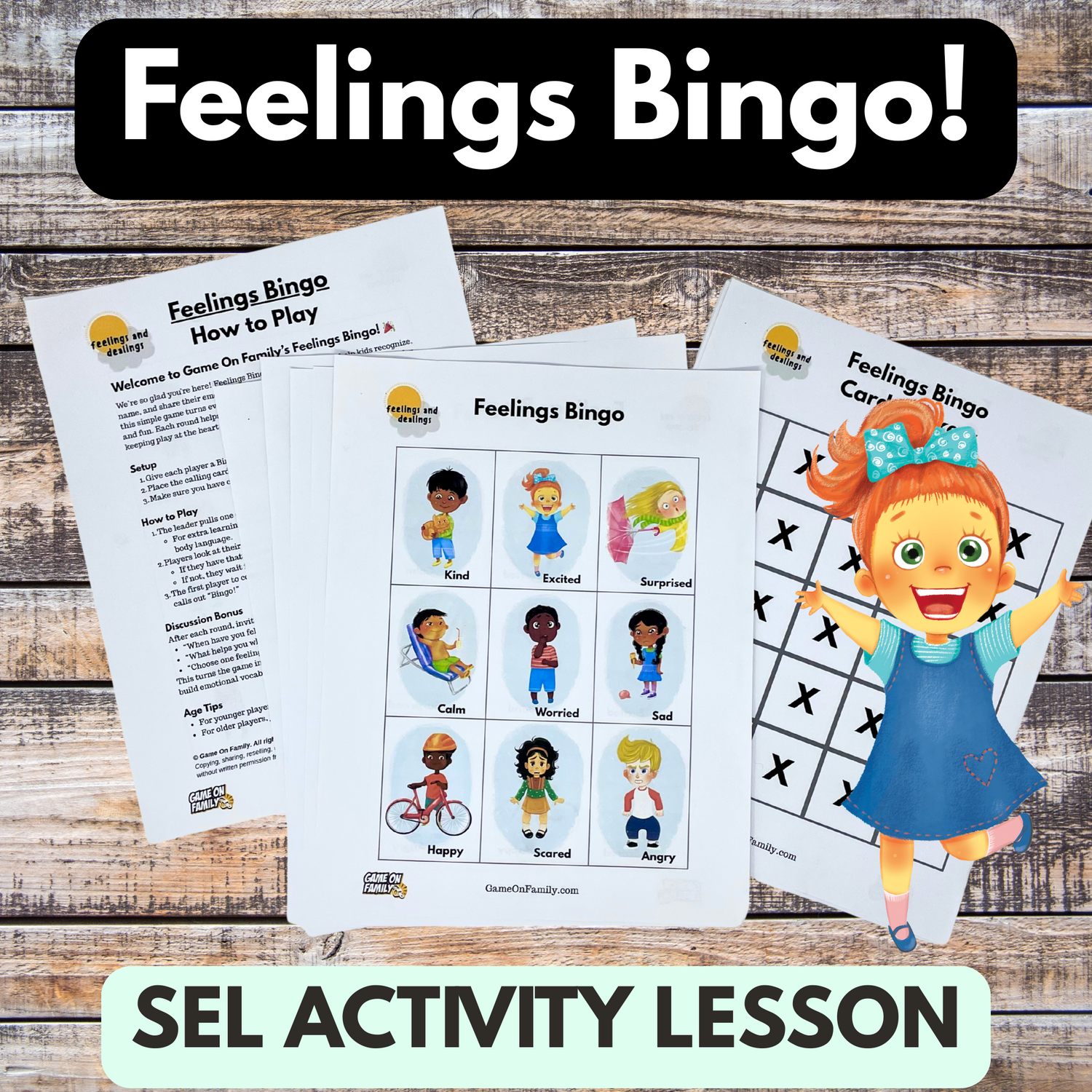
How to Play Sudoku
Share
What is Sudoku?
Sudoku is a classic single-player puzzle game that has been around for decades. Players use logic to identify patterns that reveal the correct number solutions for individual cells in the board. As more cells are correctly identified, more of the board becomes solvable. Sudoku is great for all skill levels as the boards can be set up for beginner, intermediate, and advanced player options.
Objective
The goal of Sudoku is to fill in all of the cells correctly.
Number of players
Sudoku is a one player game.
What you need
- A printed sudoku puzzle
- Pencil
Alternatively, you can play sudoku online.
Age
The classic game on a 9x9 grid is good for about 8 years old and up. For younger children, it’s possible to adjust down to a 4x4 grid with 4 2x2 blocks to make it easier.
Game Length
A game of the traditional 9x9 grid sudoku takes about twenty minutes, but it varies based on both the difficulty of the board and the skill level of the player.
Skills
- Logic: Sudoku is a game of logic. Interestingly, while it is a numbers game, no math skills are required. The numbers are really just nine unique symbols on the the board. The tame is more about logic and pattern recognition.
- Patience and perseverance: Sudoku requires patience, but every puzzle is solvable and kids can persevere to find success. :
- Math: While no math skills are required, such as addition, subtraction, or multiplication, the classic version of the game with numbers 1-9 does reinforce number recognition and number sense.
Why we like Sudoku for families and kids
Sudoku is great for building logic skills and the game. Additionally, when a player's skill level is matched with the board difficulty (a little challenging, but possible to succeed), it can be a rewarding experience to solve a puzzle.
How to Play Sudoku
1: Grab a Sudoku Puzzle and a Pencil
All you need to play sudoku is a game grid and a pencil (alternatively you can play online). We recommend starting with sudoku puzzles that are categorized as easy, then working your way up to more challenging puzzles as you build your sudoku skills. If you start with a puzzle that’s too hard, it can be a frustrating experience.
2: Understand the game board structure
Before playing the game, it’s important to understand the basic board structure. The classic version of the game is a 9x9 grid of boxes (called “cells”) with the following attributes:
- 9 columns
- 9 rows
- 81 cells some with blank, and some filled in with number clues
- 9 “blocks” of separate 3x3 boxes, marked with a bold outline
3: Know the basic rules and goal
The goal of sudoku is to identify the single unique solution where all 81 of the cells are filled out such that:
- Every row will have each of the numbers 1 through 9, exactly once in it.
- Every column will have each of the numbers 1 through 9, exactly once in it.
- Each of the 9, 3x3 blocks will have each of the numbers 1 through 9, exactly once in it.
Every sudoku game is solvable. And players should be able to solve the game using only logic. No guessing is required.
4: Identify initial clues to start solving cells
To start the game, players will try to identify the easiest clues to solve parts of the puzzle. Initial strategies include “scanning” and “counting” which are outlined more below.
5: Continue filling out the board
As more cells are properly solved, it opens up more opportunities to solve other parts of the puzzle. Players will often get stuck attempting to solve the puzzle with only basic strategies, and move into more advanced strategies, such as: intersecting lines, candidates, completed patterns, matching pairs. These strategies are outlined in more detail below.
6: Solve the sudoku puzzle
When a player has successfully entered all the correct numbers into all 81 cells, they have won the game. Each row, column, and block should have exactly one of the numbers 1-9. All games are solvable using logic (without guessing)
How to Play Sudoku Video
Sudoku Rules
The three basic rules of Sudoku are that a completed puzzle will have the following attributes:
- Every row will have each of the numbers 1 through 9, exactly once in it.
- Every column will have each of the numbers 1 through 9, exactly once in it.
- Each of the 9 blocks (3x3 boxes) will have each of the numbers 1 through 9, exactly once in it.
Additionally, it should be noted that:
- Every sudoku puzzle has only one solution.
- Only one number can be written in each square. But you can put smaller notes in the square.
How to solve sudoku puzzles | 6 winning strategies
Generally, when solving a sudoku puzzle, you are using two techniques.You are either placing numbers in a cell, or eliminating numbers that can’t go into a cell.
2 Sudoku tips and strategies for beginners
The two strategies that most beginner players should use to start solving sudoku puzzles are scanning and counting.
1: Scanning technique
2: Counting technique
How to solve sudoku when stuck | 4 Intermediate Strategies
Scanning and counting are great techniques to get started solving sudoku puzzles. But eventually, especially for more complicated puzzles, you’re going to get stuck. Here are some additional techniques to use when you get stuck.
3: “Intersecting lines” technique
4: Use “candidates” technique and “Snyder” pencil marking
5: “Completed pattern” recognition technique
6: “Matching pairs” (a.k.a. naked pair, pair, twins) technique
Sudoku Variations
Symbols
While the classic game of Sudoku is played with the numbers 1-9, these numbers are really just symbols. There is no math involved. So it’s possible to use other symbols, objects, or animals as long as there are 9 unique symbols that each are used exactly once in each column, row, and block.
How to play Sudoku for Kids
To make the game easier for kids, you can: A: Start with some simple puzzles, such as 3x1 blocks, 2x2 blocks, 4x1 blocks. https://www.youtube.com/watch?v=EARV-rZ0o1U B: Then move to a 4x4 grid with 4 blocks. It’s much easier to solve, but teaches some of the same game mechanics that will help lay the foundation for playing the classic 9x9 version. https://www.youtube.com/watch?v=-45gY61qmlw
Sudoku Glossary of Terms
- Grid: The entire playing space. Usually a 9 rows by 9 columns (81 cells)
- Cell: The individual boxes (81)
- Block: the 9 distinct groupings of 3x3 cells that are marked in bold borders. Also called “box,” or “region.”
- Rank: Horizontal groupings of 3 blocks. There are top, middle, and bottom ranks. Also called “rows.”
- Stack: Vertical groupings of 3 blocks. There are left, center, and right stacks. Also called “columns.”







